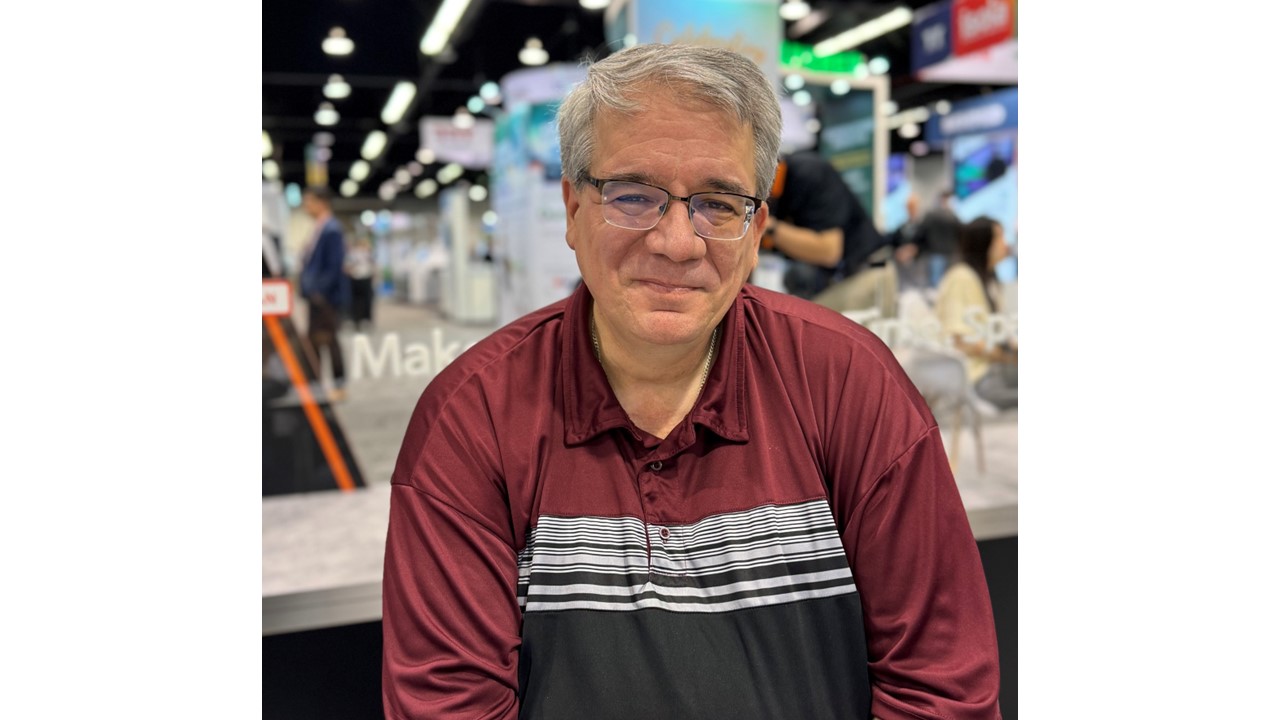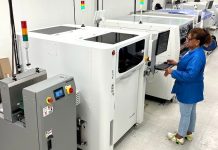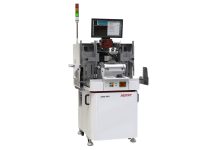Bill Capen, Sr. Engineering Technical Specialist at Honeywell, is an industry guru. With more than 34 years in the industry, Bill has gained unparalleled knowledge and experience and is always interested in improving quality and output to improve any number of processes. He has served on countless committees throughout his career, including sitting on the Board of Directors for the Surface Mount Technology Association (SMTA). He was elected to two terms, ending his time in 2023. He now is running for the position of SMTA President. We spoke with Bill recently to find out more about his time in the industry as well as the focus of his platform.
Bill, we understand that you have a long history in the electronics manufacturing industry? Can you provide our readers with a brief description of your industry experience?
I have held numerous roles over my 36 years in the electronics industry. These roles include working for an electronic parts distributor, a raw board circuit tester, SMT line technician, SMT process engineer, SMT capital equipment project manager, and Subject Matter Expert in cleaning electronics. All my roles allowed personal growth and increased technical knowledge and love of the industry.
As a seasoned professional with more than three decades in the industry, what inspired you to run for the position of President of the Surface Mount Technology Association?
The SMTA has been one of the largest driving factors in my career. SMTA empowered my learning in all aspects of electronics manufacturing and allowed me to learn and grow from numerous industry experts who were my heroes when I started and now are friends. This empowerment allowed my love of this industry to grow and prosper. As President, I want to give back to the industry that has provided an amazing life for my family. My goal with running for President is to work with and empower as many newer individuals as possible to our amazing industry and allow them to grow and push the industry farther than we can imagine. This mentorship includes encouraging SMTA chapters to think outside the box when it comes to events and include mentor time during events.
You’ve mentioned a desire to mentor and guide the younger generation in the industry. How do you bridge the gap between experienced professionals like yourself and the newer engineers entering the field?
Bridging the gap is always a challenge. SMTA has done amazing things with developing training programs. These training programs could be used as mentor events. When I say mentorship events, I envision chapters taking the training and having their own members talk about the training and how in the real-world production atmosphere the tools in the training are just the start of the process. Another part of the bridging the gap is to allow multiple chapters to work together. SMTA has amazing teams throughout the globe. If chapters work together and host mentoring events, the end result will be sharing from both mentors and mentees. Sharing no longer needs to just be emails or standard in-person events. With today’s modern technology platforms, I would encourage those that want to present on non-standard topics. A perfect example is writing a business equipment justification. This is a very nonstandard topic and one that is not taught in the academic world. If you have someone who understands the mindset of buying capital equipment and wants to share, the SMTA chapters should think about allowing that kind of presentation. Outside the box thinking is what will encourage younger and more experienced professionals to work together.
In your opinion, what aspects of “common sense” do you feel are lacking in the current practices within SMT, and how do you propose to reintegrate these principles?
Common sense is not lacking, it has just changed form so members of SMTA need to be willing to adapt and understand that what we once thought of as common sense is not so common anymore. Today’s world has evolved from the social media mindset, which says everything can be solved via social media platforms and can be solved now. But, unfortunately, is more than likely not true. Many manufacturing problems can’t be solved using just social media platforms. SMTA needs to take the mindset of incorporating more with numerous social media platforms on manufacturing challenges and have members start conversations about problems. SMTA can record the conversations so that numerous chapters can grow technical knowledge. As president, I will discuss with each chapter the possibility of increasing their social platforms and ask the board to add this to chapters’ overall performance scores that chapters get graded on.
You’ve expressed a belief that the new generation of engineers may not be solving problems effectively. How do you plan to encourage and support problem-solving skills among younger professionals within the SMTA?
Problem solving is an art form. Artists practice their craft all the time so they can create masterpieces. We must teach younger professionals that they must practice the art of problem solving all the time to be successful. As president, I would encourage the development of a problem-solving certificate that younger professionals can earn by solving problems created by many of the industry experts who have dealt with challenges and developed skills needed to solve problems. SMTA needs to bring Six Sigma training mindset to all those interested in learning. Just because you attend one class does not mean you’re an expert. If you attend numerous classes, you’re an expert in training. SMTA has numerous leaders who have learned Six Sigma tools. We can ask if our members would be willing to present an hour training class with numerous teachers, explaining and using different methods.
If elected as president, you’ve mentioned returning to the grassroots of the SMTA. Can you elaborate on what this entails and how it aligns with your vision for the association’s future?
The grassroots mindset means we need to bring back the networking mindset (whether in person or virtual), and we need to encourage mentorship at the chapter level. SMTA has done amazingly with individual chapters hosting events. To keep pushing chapters to think outside the box, I would encourage the chapters to have a mentor be part of their events. I believe that having a mentor present will increase numbers, which will then increase networking and mentorship. SMTA was built on networking and sharing technical knowledge. We can keep that going strong to the next generations by giving chapters more tools for networking and technical sharing.
Congratulations on receiving the Outstanding Technical Engineering Professional Award from Honeywell. What other awards have you received and how have you leveraged your expertise and recognition within the industry to benefit the exchange of information to the new generation?
I have earned numerous awards when it comes to my work mindset, which is always to push for an answer that solves the problem. Some of these awards were based on working for companies in which English was not the first language for employees. This means that using standard English words don’t always work for employees who don’t speak English as their first language. To overcome the challenge of conveying information to these associates, I developed training that is picture-based and very specific in the order of steps and how to get there. I believe the SMTA can use this same approach when working with younger industry team members. Instead of trying to just use pictures to walk an associate through certain steps, SMTA can use social media platforms to encourage information sharing with the new generation of manufacturing and engineering.
You emphasize the importance of being judicious over commercial interests. Can you expand on how you plan to maintain this balance while leading the SMTA, especially in an industry where commercial pressures can be significant?
One of the hardest things professionally is to be fair and genuine. Numerous vendors can provide technology that solves problems. What matters is how companies test the technology and how data is created. Data is always going to drive smart business decisions. As SMTA president, I will ask that chapters provide guidance on how to properly test technology. If engineers are given a path forward testing-wise, they will generate data that makes strong business sense and makes products better and faster, which is always preferred in manufacturing technology. If a vendor’s technology truly is better than others, the data will show that. Competition drives success. As SMTA president, I will encourage vendors to let the data win. Vendors always try to make a sale, but if they help a newer engineer learn that even if the technology did not win today, it might win later. Encouraging vendors that success is measured in years not months will be my message to vendors.
Returning to the SMTA’s original chapter is part of your vision to impact the younger generation positively. How do you see this move fostering stronger connections between experienced professionals and newer members, and what tangible outcomes do you hope to achieve?
Getting back to the true chapter mindset is critical. True chapter mindset means engaging in technical meetings not only in person but also virtually. The pandemic showed that virtual meetings work. They also allow people to interact with others. Yes, virtual sessions have challenges but so do in-person sessions (finding a venue, speaker, getting people to attend). SMTA has always succeeded at in-person meetings. To the newer generation, in-person meetings can be stressful because they don’t know anyone, the venue is far away, or they just don’t want to meet people they don’t know. Unfortunately, COVID brought much stress to new engineering people and that stress needs to be acknowledged. To overcome this stress, I would encourage SMTA chapters to think of virtual meetings or meetings through social media platforms as alternatives to in-person meetings. The best meeting is a meeting that someone attends. The technology that is used today is much more powerful and can easily reach a large audience. SMTA already uses some social media and virtual meetings. As president, I would encourage more use of the technology and support the chapters using all available tools from the SMTA.
Is there anything else you would like our readers to know about you and your plans for the SMTA if elected?
SMTA has led the electronics industry for 40 years in networking and sharing the ideas needed for successful, modern manufacturing. As president I would encourage all SMTA members and chapters to start thinking outside the box when it comes to electronics manufacturing and how we mentor the next generation of engineers. When I started, cell phones were only seen in sci fi movies. Now cell phones are the heart and soul of our industry. The next generation of engineering will make it so we have technology within our brain. To make that happen I want all of SMTA to understand what we did in the past was great and laid the foundation for how amazing this organization is. To take the technical knowledge to the next level, we will have to be open minded when mentoring the next generation. We will also have to encourage networking on all levels, whether in-person or virtual. Networking will allow others to learn from the experienced professionals and mentor the next generation.










